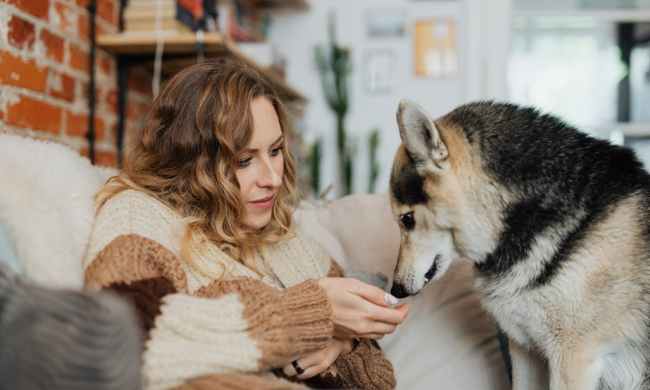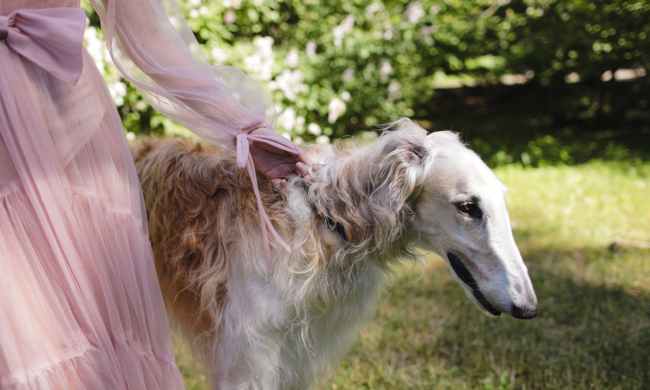Whether you’re a person or a pup, dealing with an itch can be distracting, uncomfortable, and downright annoying. That’s why it’s easy to relate to your dog’s frustration when suffering from itchy paws. Narrowing down what’s causing dog paw infections and itches can be tricky from observation alone, so it may take some trial and error before you find some relief for your buddy. Once you do, though, you’ll be so glad you did!
Don’t be afraid to call your local veterinarian if you’re having trouble figuring out what’s behind your pup’s paw irritation. They’ll get to the root of the problem before you know it and have plenty of suggestions to get you started. Until then, here’s what you’ll want to know about how to treat itchy paws on your dog.
Causes of dog’s itchy paws, from allergies to infections

Though itching, licking, and biting are all symptoms of skin discomfort, it’s not always easy to tell what’s causing it. Here, we’ll break down a few of the main sources of paw irritation so you can help figure out what’s up with your best bud.
Dog paw infections are more common than you think
Yeast infections occur when the naturally occurring yeast on a dog’s body begins to overpopulate. It works the very same way with people! According to Pawlicy Advisor, this can be due to allergies, moisture buildup, or bacterial infections. Luckily, it’s not life-threatening, but it can cause several distressing symptoms for your pup. These symptoms include:
- itching
- inflammation
- dry, flaky skin
- discoloration around the base of the nail
- chewing and licking at their paws
- a pungent, yeasty odor
Allergies are common triggers of paw irritation
If you notice your pup scratching their paws more than usual, allergies could be the culprit. They can be tricky to hone in on, though, as allergies can come from food, nature, or even products in your home. To begin narrowing it down, check whether your pet’s paw symptoms come at a certain time, such as after a walk or bath time.
Allergies can manifest as a yeast infection or other skin conditions, so you may not see the stereotypical red, swollen skin. Your vet will be the best option to help identify allergies as the main cause of the discomfort and decide how to treat them. Feeding your pup local honey is just one easy, homeopathic option to try!
Dry paw pads can make for more than flaky skin
Sometimes, your four-legged friend may be licking their paws due to dryness and peeling. Whether this occurs from heat, friction from long walks, or even normal wear and tear, it’s important to help your dog before they chew or lick them too much. Even dry winter weather can cause dryness and cracking! Open skin is also a breeding ground for infection, so don’t wait to treat dry or irritated paws. We’ll let you know below what you need to treat these conditions, so keep reading.
Dirt and moisture seem harmless but can cause a lot of damage
Sometimes, a lack of consistent paw hygiene can cause a buildup of sweat, dirt, and all that gross stuff. As you can imagine, this gets uncomfortable, so it’s no wonder why dogs may start licking and chewing their feet when this happens. Luckily, the solutions for dirty paws are simple, so these symptoms are easily avoidable.
When is an itch isn’t an itch?
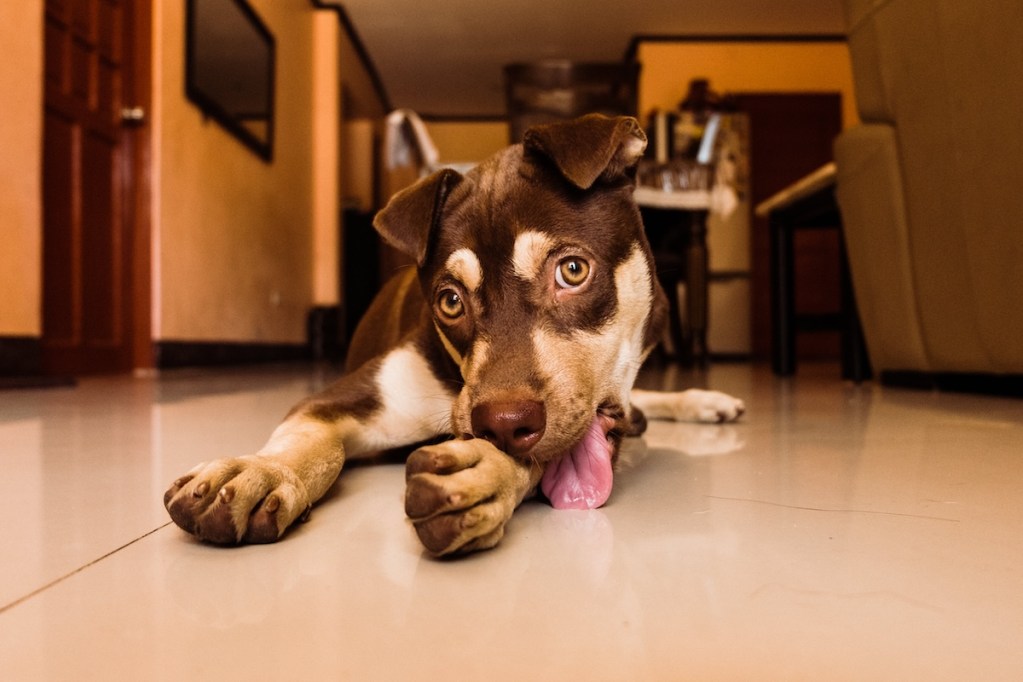
While it makes sense to assume that a dog obsessively licking their paws has an annoying itch, they could be uncomfortable for another reason. If paw scratching or licking is a new, sudden behavior, check their paws for injuries or irritations. The issue could be as simple as a splinter or a pebble wedged between their paw pads!
If the behavior has been going on for a while, it could be a case of canine anxiety. Paw licking and chewing are common symptoms of anxiety in dogs, though you may also notice other signs of nervousness like shaking and pacing. Every dog expresses feelings, including anxiety, in their own way, so you’ll still have to resort to observation and a watchful eye.
How to treat a dog with itchy paws
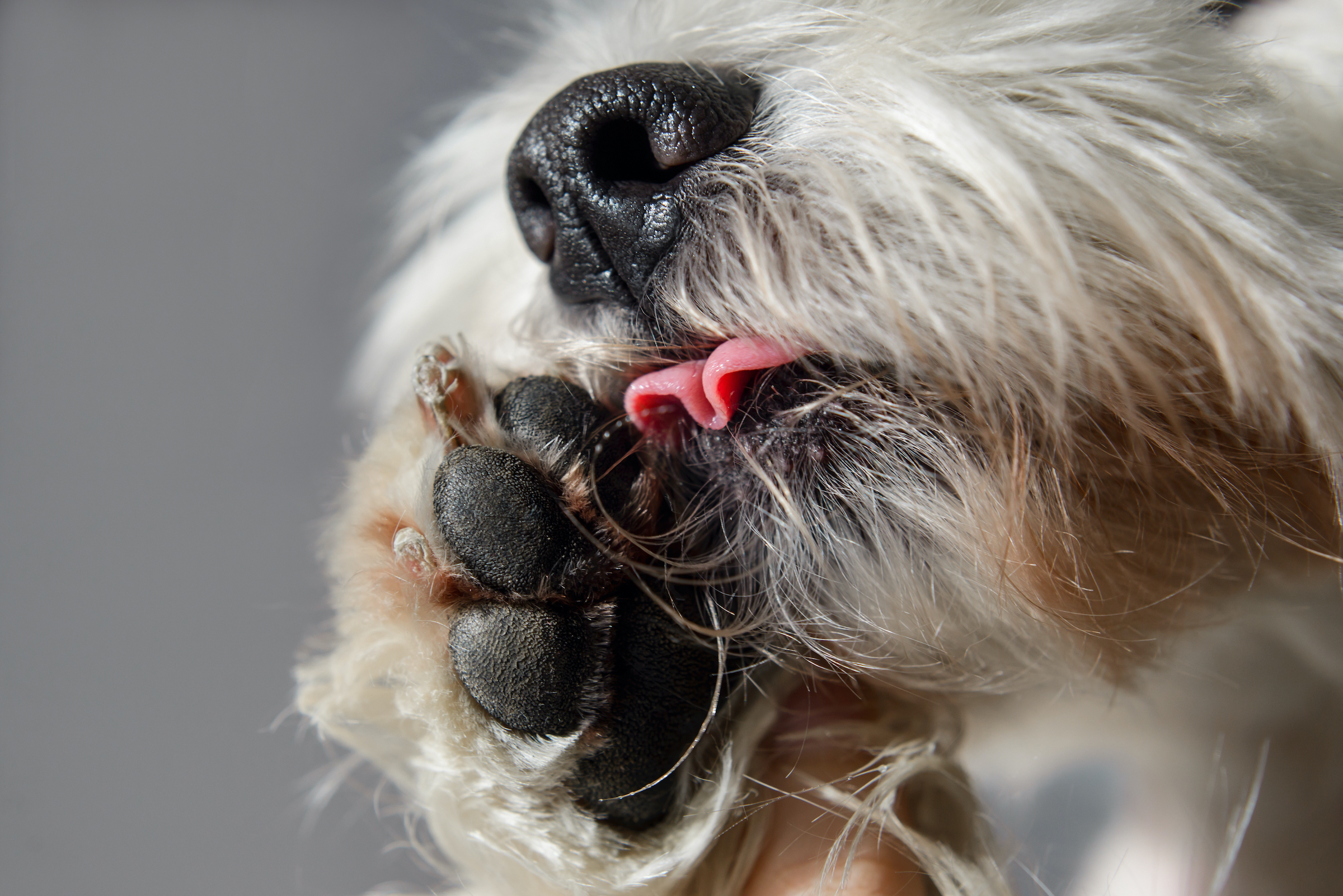
No matter what’s behind your dog’s discomfort, there’s something you can do about it. Don’t be afraid to ask your veterinarian for advice if you’re unsure where to go, but here are some places to start.
Paw balm can soothe irritated paw pads
To treat dry and cracked paws that aren’t causing significant problems, many paw balms and ointments will do the trick. There are tons of paw balms available on Amazon and in pet stores, including the ever-popular Musher’s Secret, and environmentally friendly, vegan options like Paw Soother.
Practice good paw hygiene with your furry friend
Simple habits like washing paws and maintaining grooming can go a long way toward preventing skin conditions and discomfort. Keeping paw fur trimmed will prevent your pup from picking up unwanted items while out and about, and items like the Paw Plunger make washing your dog’s paws as easy (and mess-free) as possible.
Treat allergies as soon as possible
If you suspect allergies are behind your dog’s itchy paws and infections, the most helpful thing you can do is find the cause of the irritation. This will be a process of elimination! It may involve changing your dog’s diet, environment, or medications, though you shouldn’t change your pet’s medicine before checking in with your vet. Steroids and antihistamines can help battle allergies, but skin testing and further treatments may be available through your veterinarian.
Medicated products can be a major help
To effectively treat fungal and yeast infections, you’ll need to enlist the help of some medicated products. If your veterinarian does not prescribe a specific medication, look for ingredients like miconazole and chlorhexidine in the sprays and shampoos you choose. Plenty of hygienic treatment wipes, anti-fungal shampoos, and medicated moisturizing sprays for pets might do the trick.
Oral medications
If your dog’s yeast infection, allergies, or dryness does not improve enough with over-the-counter products, visit your veterinarian for some advice. They will be able to give your buddy a thorough look-over and prescribe the most appropriate medication for Fido’s skin.
How to prevent dog paw infections and itchy paws
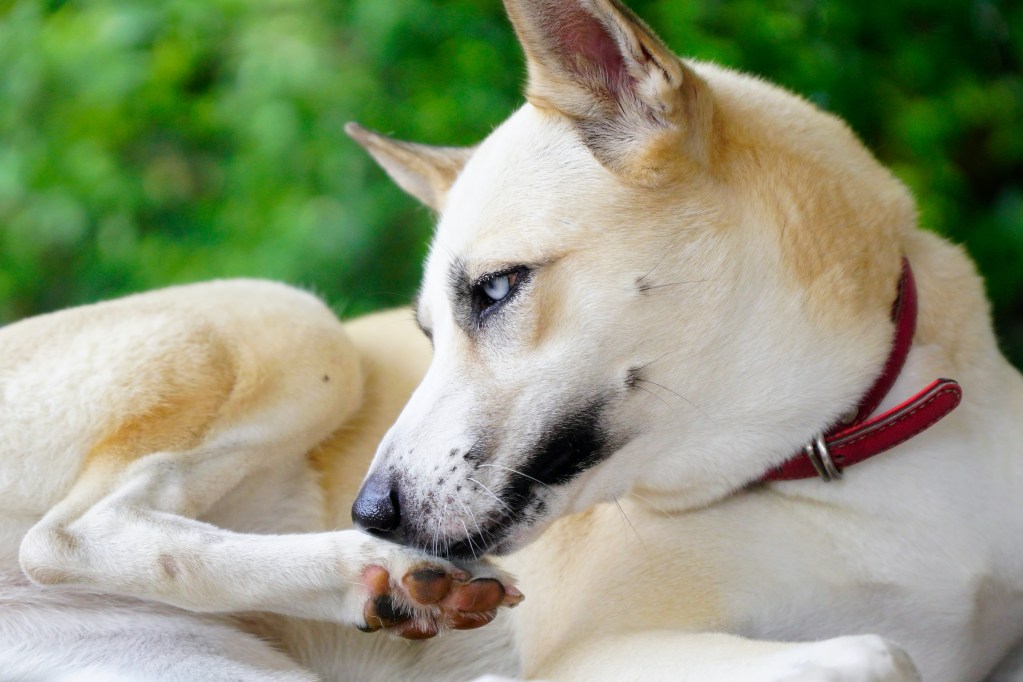
You may have heard it said that prevention is the best medicine, and that can certainly be true with chronic issues like paw discomfort. Itching the paws can cause a snowball effect of irritation and symptoms, so it’s a good idea to avoid triggers of paw itchiness once you know what they are. If you haven’t found a trigger for your pup, though, you can do a few things to keep your buddy’s paws protected.
Invest in booties for your dog to wear outside
Your four-legged friend might not like the idea of wearing shoes or booties, but they can sometimes be necessary to keep paws protected from allergens or the elements. You can help your dog get used to the new accessories by introducing the booties for a few minutes at a time, then slowly working your way up.
Keep up with your pooch’s perfect grooming schedule
Grooming is a lot more than a simple bath and a haircut! Experienced dog groomers will also clean up your pup’s paws, which will help in more ways than one. Trimming the hair between the paw pads will give your dog more traction on the ground, prevent dirt and moisture from getting stuck in their paws, and prevent painful mats from forming.
At home, you should get in the habit of regular paw washes or at least checking their paws for anything irritating. It might take a while to make a routine out of it, but once you do, it will feel like second nature.
Whatever is behind your dog’s itchy paws, you can do plenty about it. Even better, most of these remedies are available over the counter and affordable, so you won’t have to shell out a ton to treat your dog’s paw infections or allergies. Even if you’re not sure about intense treatment, there’s no harm in trying out a medicated wipe or simple paw wash, so what are you waiting for?



